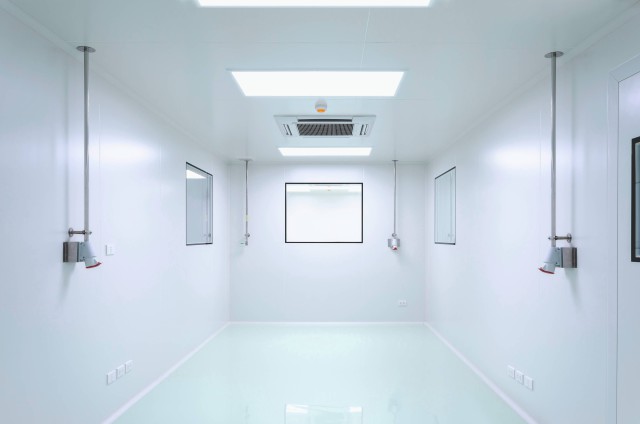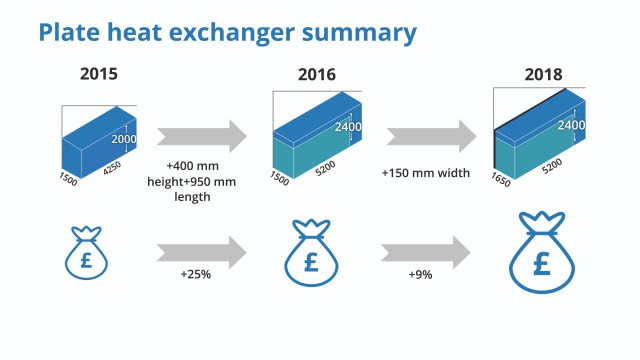Ventilation in Healthcare - Replace or Refurbish

Jim Norris, National Head of Sales at VES, says following the difficult years the NHS has faced in the UK everybody has been made acutely aware of the need for adequate ventilation, good indoor air quality, and a safe environment to care for those who have been hospitalised.
The long-awaited revision to the Health Technical Memorandum 03-01 (2021) gave greater insight and guidance to specifiers, installers, manufacturers and end-users on accepted specialist ventilation systems and design within healthcare buildings. However, there still needs to be objective consideration on the most suitable solution for each individual healthcare environment.
In October 2020, the UK Government named 32 hospitals of the 40 originally announced in the 2019 manifesto, to be built by 2030, along with the addition of other frameworks designed to upgrade existing premises to current building standards. The building of new hospitals is not a quick process and like any construction project requires significant designing and development time prior to a brick being laid. With a new building design, it’s possible to incorporate current building legislation into both the budget and layout, so building services engineers can accommodate large, compliant Air Handling Units (AHUs) within the confines of the building, often due to the sheer size of these systems, other services and materials are subsequently fitted after the AHU integration. However, for the 1,229 live hospitals in the UK, installing a new AHU is simply not a luxury many can afford logistically and at times financially. So, can refurbishment be an option?
Previously, with the introduction of Energy-Related Products (ErP) supported by the Ecodesign Directive (2009/125/EC) legislation in HVAC aiming to reduce the number of greenhouse gases and improve the efficiency of current systems, many users chose to make quick changes that yielded quick returns on investment. With ventilation systems, this typically included the changeover of belt-driven AC fans to direct drive EC plug fans as they account for approximately 40% of the electricity used in a ventilation system, new heating or cooling coils often operating at lower flow and return temperatures usually seen with the introduction of air-source heat pumps, moving away from gas-fired boilers or enhancing the control strategy to work on demand enable rather than 24/7 usage if it isn’t required. But June 2021’s updated HTM-03-01 guide, despite outlining Net Zero and Sustainability targets identifying the importance of ErP legislation, only allows for the refurbishment of systems that can be made “fully compliant with current standards” and “if it is not more than 10 years old” (HTM 03-01 Part A, item 4.71). Consideration should then be made to remodel plant rooms or create plant space to house the additional elements of the system, which if anyone in the industry is au fait with, is not an easy feat.
If looking to re-purpose or utilise an existing system, maximising it’s potential for future use then there are a number of elements to consider. Firstly, is the existing system serving the same areas or zones as before? Referring to Appendix 2: Summary of design conditions, take for example an Infectious Disease Isolation room which may have been designed on 10-15 Air Changes per Hour (AC/H). If the system is now being remodeled alongside a departmental change, then the design flow rate requirements may be reduced. Secondly, ErP 2018 required minimum efficiencies achieved from the overall ventilation system and the heat recovery device being utilised. If an existing AHU installed in 2013 were to be refurbished, it’s quite possible that the system’s heat recovery device may not meet ErP 2018’s minimum 73% efficiency for a plate heat exchanger or 68% for a run-around coil. Fitting a larger system with a greater face area to achieve higher efficiency in the current AHU frame may not be achievable, but it is simply no longer acceptable to only achieve some improvement, every effort must be made to comply with the latest regulations which HTM-03-01 2021 now encompasses.
Fortunately, with the increase in dimension of AHUs following ErP legislation, allowance has now been made for the air velocity to be considered, still achieving no greater than 2m/s but with some tolerance on a project-by-project basis. Illustrated below, a simple 2.5m3/s AHU with plate heat exchanger has significantly increased in size when the legislation set minimum efficiency requirements in 2016 and again in 2018.
If refurbishing isn’t a viable option, replacing the overall system will come with its own difficulties if space is at a premium. Situating a system externally was often the favoured solution but greater consideration has now been made for safe and long-term maintenance of the AHU. Rooftop plantrooms or AHUs with corridors are now preferred, which allows the user to maintain the system safely without the challenge of environmental conditions, store spare components and filters complete with a sanitary station to self-contain the system as if it were located indoors.

Ensuring the systems selected now are sustainable and future-proofed is imperative as well as considering the financial implications of procuring an entirely new system, with rising labour and material costs continuing to affect the industry. With a new AHU, some users may be steered towards extended warranty and maintenance support offered by a manufacturer, with the entire system provided by one supplier, something a refurbished system cannot be entirely certain of.
If there are positives to take from the Covid-19 pandemic, it has made more people both in and out of the industry aware of the importance of good indoor air quality (IAQ). The addition of the recent update to Approved Document F (vol.2) allows designers to assess their ventilation strategies against each individual volatile organic compound (VOC), based on data provided by Public Health England, as well as encourages the use of CO2 monitors to measure levels where the airborne infection is a high risk. Whilst these measures are well received, there is limited consideration given to AHU systems themselves and how the introduction of high-grade filters or deployment of UV, BPI, and other similar systems can aid the improvement of the outdoor air being drawn into the space served. Systems are however discouraged from recirculating, something in place prior to the June update but again reiterated for clarity. Considering that we spend around 85% of our time indoors, it's crucial that IAQ is continuously improved by addressing the external air quality coming in and reducing the harmful bacteria that could be recirculated.
Both methods have their advantages and disadvantages. Re-using existing systems, maximising the lifecycle, and minimising wastage are at top of most people’s agenda both in and out of the HVAC industry. Refurbishment is often more cost-effective and there is widely published data to showcase the ROI and energy savings made. However, it is critical that within all areas served by mechanical ventilation, particularly in healthcare, a consistent effort is made to ensure compliance to obtain a common level of quality throughout the UK’s built environment. Whether this is by replacing or refurbishing, clear dialogue with industry experts and an objective understanding must be made with the patient and users at the forefront of the design.
Jim Norris is National Head of Sales at VES







